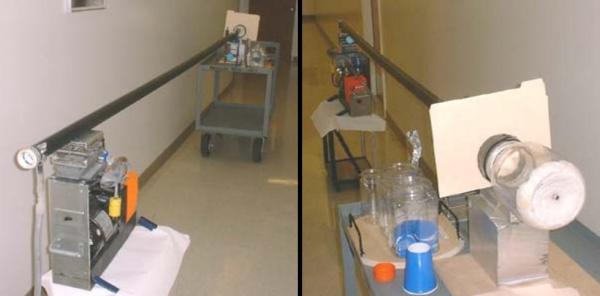Every day we humans hang out and think nothing of the air that is all around us. It is easy to forget that the air has mass and is pulled down to the earth by gravity creating an ambient pressure of about 14.7 psi. This ambient pressure is the force that crushes a plastic bottle when you lower the internal pressure by sucking out the air. [Prof Stokes] from Brigham Young University has used this powerful ambient air pressure as the power source of his ping pong ball cannon.
Instead of filling a reservoir tank with compressed air and using that to fire a projectile, this canon has the air removed from the barrel to create the pressure differential that propels the ping pong ball. The ball is put in one end of a 10 ft long tube. That end of the tube is then covered by a sheet of Mylar. The other end is covered with the bottom of a disposable plastic cup. A vacuum pump is then used to remove the air inside the tube and it is this pressure differential that keeps the plastic cup secured to the end of the tube. When it’s firing time, a knife is used to cut the Mylar at the ping-pong-ball-end of the tube. Air rushes in to fill the vacuum and in doing so accelerates the ping pong ball towards the other end. There is a large jar at the business-end of the cannon that catches the ping pong ball and contains the shrapnel created during the ball’s rapid deceleration!
Since this was a science experiment at a university, some math was in order. Based on the atmospheric pressure and ball cross sectional area, the calculated speed was 570 meters/second or about 1300 mph. The calculations didn’t take into account leakage between the ball and the tube or viscosity of the air so a couple of lasers were set up at the end of the cannon to measure the actual speed – 600 mph. Not too bad for just sucking the air out of a tube!












